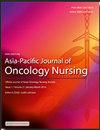Artificial intelligence-assisted machine learning models for predicting lung cancer survival
IF 2.4
3区 医学
Q1 NURSING
引用次数: 0
Abstract
Objective
This study aimed to evaluate the feasibility of large language model-Advanced Data Analysis (ADA) in developing and implementing machine learning models to predict survival outcomes for lung cancer patients, with a focus on its implications for nursing practice.
Methods
A retrospective study design was employed using a dataset of lung cancer patients. Data included sociodemographic, clinical, treatment-specific, and comorbidity variables. Large language model-ADA was used to build and evaluate three machine learning models. Model performance was validated, and results were presented using calibration plots.
Results
Of 737 patients, the survival rate of this cohort was 73.3%, with a mean age of 59.32 years. Calibration plots indicated robust model reliability across all models. The Random Forest model demonstrated the highest predictive accuracy among the models. Most critical features identified were preoperative white blood cells (2.2%), preoperative lung function of Forced Expiratory Volume in one second (2.1%), preoperative arterial oxygen saturation (1.9%), preoperative partial pressure of oxygen (1.7%), preoperative albumin (1.6%), preoperative preparation time (1.5%), age at admission (1.5%), preoperative partial pressure of carbon dioxide (1.5%), preoperative hospital stay days (1.5%), and postoperative total days of thoracic tube drainage (1.4%).
Conclusions
Large language model-ADA effectively facilitates the development of machine learning models for lung cancer survival prediction, enabling non-technical health care professionals to harness the power of advanced analytics. The findings underscore the importance of preoperative factors in predicting outcomes, while also highlighting the need for external validation across diverse settings.
预测肺癌生存的人工智能辅助机器学习模型
目的本研究旨在评估大型语言模型-高级数据分析(ADA)在开发和实施机器学习模型以预测肺癌患者生存结果方面的可行性,并重点讨论其对护理实践的影响。方法采用回顾性研究设计,选取肺癌患者数据集。数据包括社会人口学、临床、治疗特异性和合并症变量。使用大型语言模型- ada来构建和评估三个机器学习模型。验证了模型的性能,并用标定图给出了结果。结果737例患者生存率为73.3%,平均年龄59.32岁。校正图显示了所有模型的稳健模型可靠性。随机森林模型的预测准确率最高。确定的最关键的特征是术前白细胞(2.2%)、术前用力呼气容积(一秒内肺功能)(2.1%)、术前动脉血氧饱和度(1.9%)、术前氧分压(1.7%)、术前白蛋白(1.6%)、术前准备时间(1.5%)、入院年龄(1.5%)、术前二氧化碳分压(1.5%)、术前住院天数(1.5%)、术后胸管引流总天数(1.4%)。大型语言模型- ada有效地促进了肺癌生存预测机器学习模型的开发,使非技术医疗保健专业人员能够利用高级分析的力量。研究结果强调了术前因素在预测预后中的重要性,同时也强调了在不同环境下进行外部验证的必要性。
本文章由计算机程序翻译,如有差异,请以英文原文为准。
求助全文
约1分钟内获得全文
求助全文
来源期刊

Asia-Pacific Journal of Oncology Nursing
Multiple-
CiteScore
2.80
自引率
11.10%
发文量
136
审稿时长
31 days
 求助内容:
求助内容: 应助结果提醒方式:
应助结果提醒方式:


